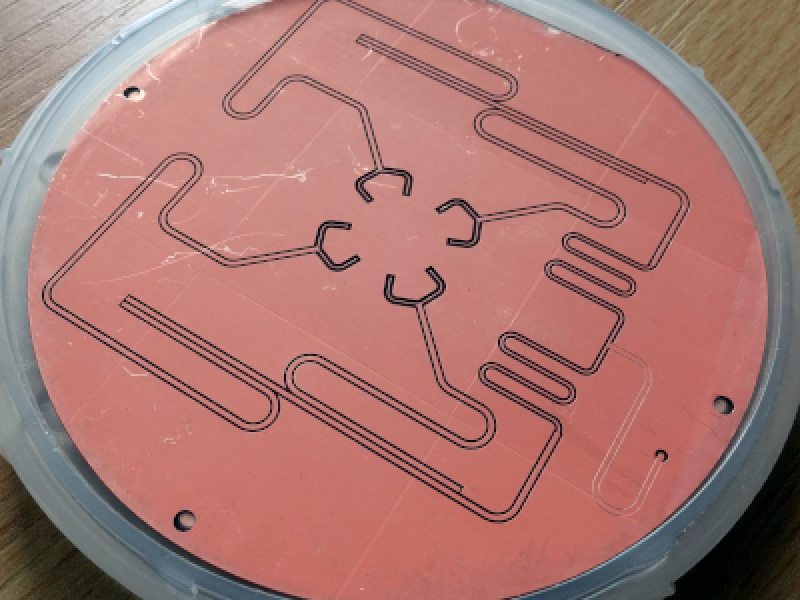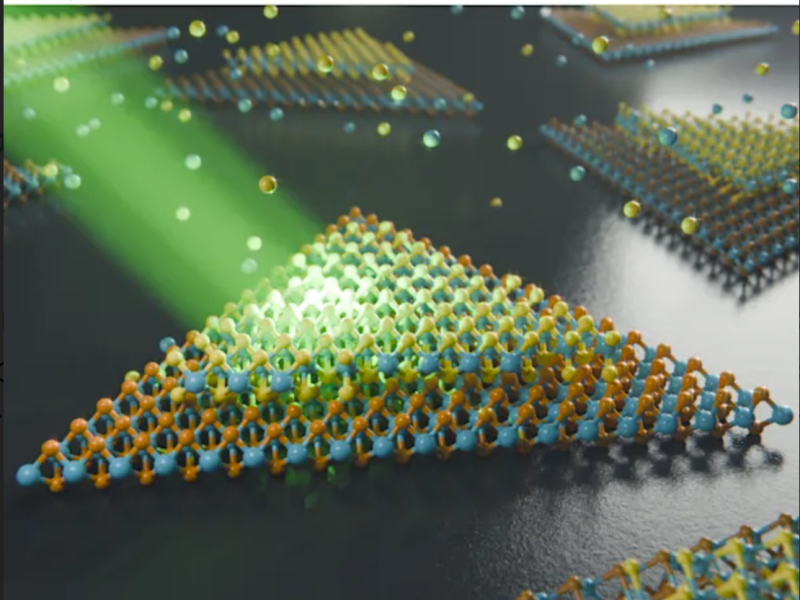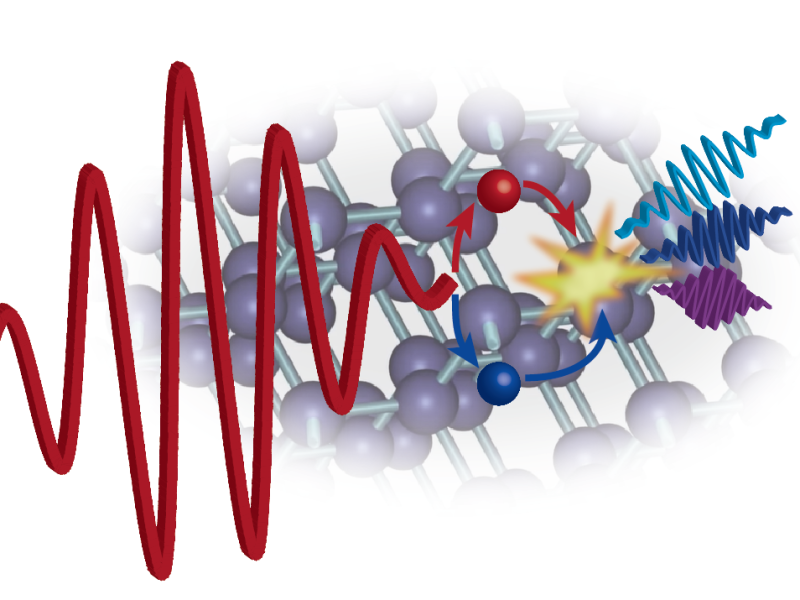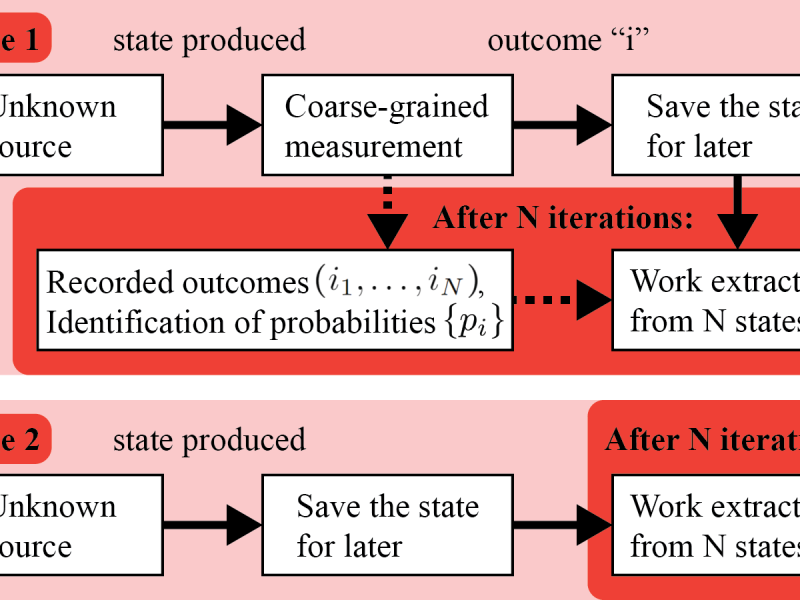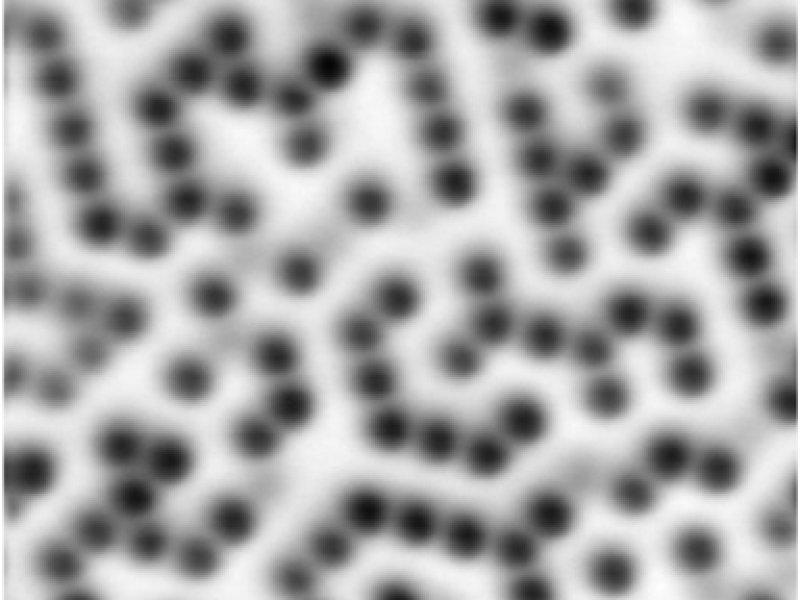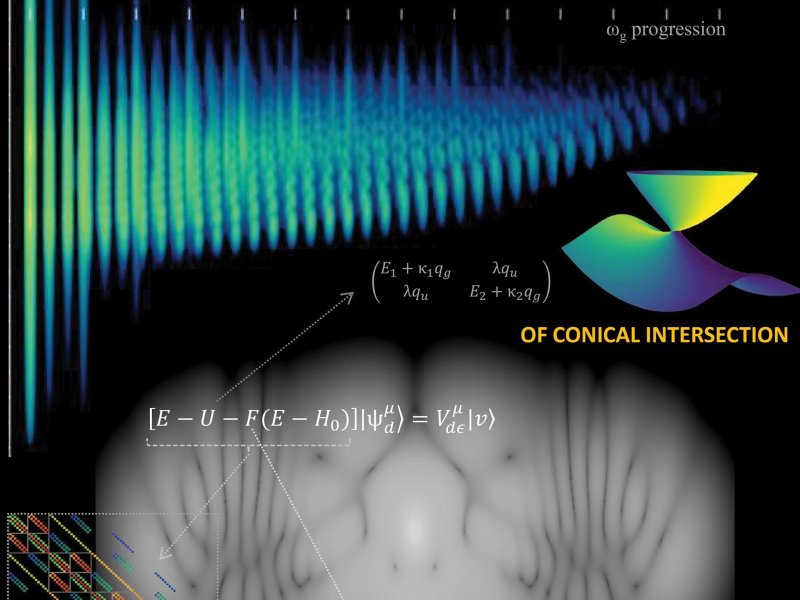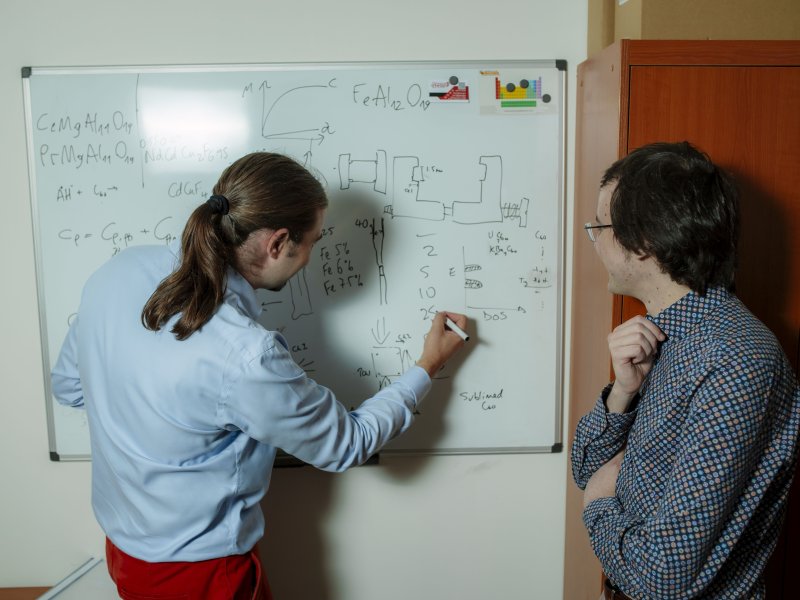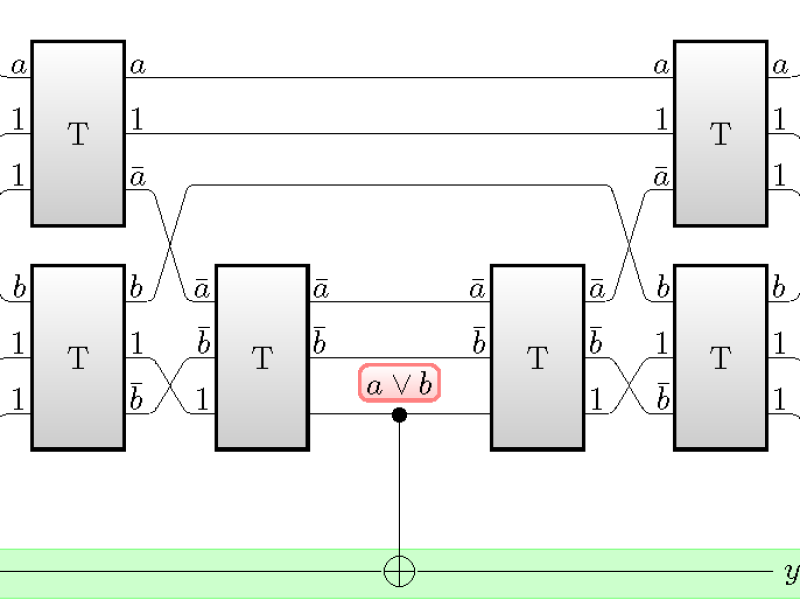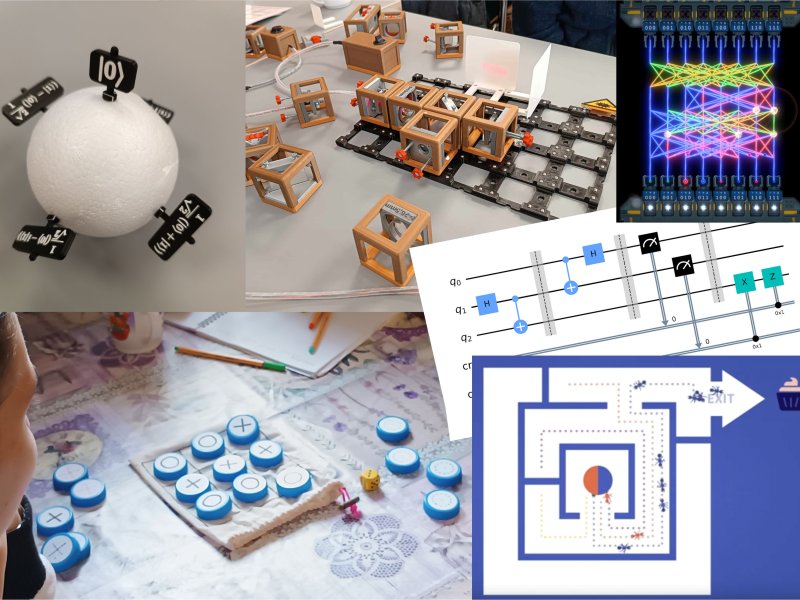Quantum technologies at CUNI MFF
MFF UK is a part of the National Initiative for Quantum Technologies (NIKT).
Quantum technologies encompass quantum computing, sensing, simulation, communication, and fundamental research. MFF UK is oriented mainly on the fundamental research with specific applications in other areas.
Contact information:
News
- The Ultracold Plasma Laboratory has secured a patent for its innovative microwave-driven ion trap technology (December 18, 2024)
Research groups
Ultra-cold Plasma Laboratory (UCPLab), Department of Surface and Plasma Science
Quantum Sensing, Low-energy collisions, Ion Trap, Trap Manufacturing
We focus on trapping and cooling levitating electrons for the purposes of quantum sensing. We develop methods of preparing trapped electrons in specific quantum states using laser-cooled ions. For this purpose, we test various technologies for manufacturing novel three-dimensional and planar trapping devices.
Physics of Nanostructures Group, Department of Condensed Matter Physics
Quantum Low-dimensional Materials, Light-matter Interaction, Quantum Criticality
Our team focuses on the growth of low-dimensional quantum materials and their assembly into functional heterostructures. We investigate nontrivial light-matter interactions, including topological phase transitions and quantum criticality. Our research includes the development of single-photon emitters, as well as detectors and emitters of polarized and structured light. We study quasiparticles in condensed matter physics using chiral and twisted light. Through these efforts, we aim to advance fundamental understanding and enable novel quantum technologies.
Quantum Optics and Optoelectronics, Department of Chemical Physics and Optics
Ultrafast phenomena in condensed-matter, Nonlinear optics, Ultrafast electron microscopy, Quantum electron-photon interactions in free space
We are focused on two distinct topics. The first topic is ultrafast strong-field-driven electron dynamics in solids, where we apply high harmonic generation spectroscopy to study nonequilibrium phenomena with sub-femtosecond time resolution. The second topic is developing new methods of time-resolved electron microscopy and studying the quantum interactions between free electrons and photons.
Quantum Information and Thermodynamics group, Department of Condensed Matter Physics
Many-body quantum systems, Thermalization, Concept of entropy, Entanglement, Quantum batteries, Work extraction, Quantum metrology and measurement, Quantum information processing, Quantum machine learning
Our theory group explores various subfields of Quantum Information, focusing on the interplay between energy and information to advance quantum technologies. We study many-body quantum systems, thermalization, entropy, entanglement, and quantum batteries alongside work extraction and precision measurement in quantum metrology. Additionally, we develop innovative approaches in quantum information processing and quantum machine learning to address complex problems and enhance computational capabilities.
Group of Many-Body Quantum Theory, Institute of Particle and Nuclear Physics
Stationary and Dynamical Quantum Phase Transitions, Quantum Chaos, Quantum Dynamics of Driven Systems
Our research can be divided into two key areas. The first area is the study of various forms of quantum critical phenomena, in particular quantum phase transitions of stationary states and dynamical quantum phase transitions. We investigate the precursors of these phenomena and their dynamical consequences in finite (closed and open) bound systems - e.g., systems of interacting qubits or systems of qubits coupled to quantum field modes. We are interested, e.g., in the influence of critical phenomena on the efficiency of the preparation of correlated quantum states or their role in various atypical dynamical effects. We also study the formation of critical structures in quantum tunneling and scattering. The second key area of our research is focused on time correlations and other complex dynamical properties of quantum chaotic systems.
Theory Group, Department of Condensed Matter Physics
Quantum Dots, Superconducting Heterostructures, Quantum Phase Transistions, Autonomous Quantum Resources, Quantum Materials
We primarily study superconducting heterostructures with quantum dots which can potentially form future qubits. By combination of advanced numerical methods such as Numerical Renormalization Group, Quantum Monte Carlo, and/or Quantum Neural Network States and (semi)analytical methods we investigate equilibrium properties (e.g., ground state phase diagram) as well as dynamics (e.g., microwave response or post-quench dynamics) of such systems. Furthermore, we address the questions connected with the generation of autonomous quantum resources by designed coupling of systems of interest to dissipative bath(s). Finally, we study interaction of 2D materials with ultrashort and ultrastrong light pulses with potential applications in valleytronics.
Thin Films Group, Department of Surface and Plasma Science
Growth of thin films, Surface atomic structure, Scanning Tunneling Microscopy, Atomic Force Microscopy, Polarons, Charge dynamics in semicodnuctors
We study processess at surfaces at the atomic scale. The research has several directions, such as chemical reactions at the atomic scale or growth of thin films with various properties. Recently, the main focus is on charges self-trapped in ionic lattices (polarons), their dynamics and interaction with defects.
Quantum Physics Group, Institute of Theoretical Physics
Scattering physics, electron-molecule collisions, photoionization, nuclear dynamics, spectroscopy of continuum, resonant states
We focus on numerical simulations and construction of models of electron collisions with molecules and molecular photoionization. We develop and use advanced ab initio R-matrix codes for description of continuum states in multi-electron molecules. We also perform simulations of multi-electron molecules interacting with ionizing laser fields of perturbative and non-perturbative intensities.
Group of Magnetic Properties, Department of Condensed Matter Physics
Bulk magnetic properties, Quantum Phase Transitions, Quantum Spin Liquid States, Emergent Quantum States, Minerals with Quantum Magnetism
We study the magnetic, electronic, and thermodynamic properties of bulk materials. We follow both trivial, and non-trivial emergent states, tuned by chemical means, applied pressure, or magnetic fields, through temperature ranging from room temperature to temperatures below 10 mK. We employ in-house thermodynamic, magnetic, and electronic property probes, with large-scale-facility structural and spectroscopic data to characterise and understand the behaviours of quantum bulk 2D and 3D materials.
Department of algebra
Quantum Computing, Quantum Information
An introductory course in theoretical principles of quantum computers and quantum information for students of the Mathematics for Information Technology study program, in particular its cryptography branch. Consequently, the main focus is on Shor's algorithm. The character is purely information theoretical (in the spirit of Nielsen and Chuang book). No previous knowledge of quantum mechanics is required.
Department of Physics Education
Teaching and Learning Quantum Physics, Basics of Quantum Technologies on Secondary School Level
We focus on problems of teaching and learning quantum physics and quantum technologies at the secondary and high school level. This involves finding and testing non-mathematical ways of representation and appropriate analogies directly with the target students. A large part of our activities are also focused on working with in-service and pre-service teachers.

